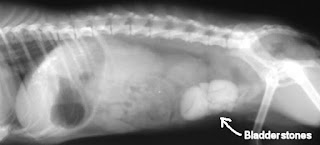Loss Of A Rabbit Partner
 |
| death in rabbit |
How to cope with the loss of a partner bunny bound and how to help them recover from it ...
For bound rabbit, loss of a spouse can be very traumatic. Bonded rabbits live very closely together, spent hours sleep, treatment, eat, play and "talk" so that the absence of their partner suddenly difficult for them to overcome. Specifically, rabbits that had been bound from infancy, whether with friends or rabbit other waste, may react very badly to lose their partner. As an owner, this is a very difficult time, trying to understand and support your remaining rabbits when dealing with your own grief.
Overcome death
We all hope for a peaceful death rabbit and happiest scenario is when a rabbit you just go to sleep and not wake up. In fact, this is the best thing for rabbits left.
Rabbits are not traumatized by seeing the pair off and in fact it was helpful for them to see this so they can understand what has happened and do not think that their partner was gone. Rabbits have been known to engage in a kind of dance when their spouse died - not known what the purpose of this but some people think it is the way rabbits expressing their grief while giving them good friends "send".
If you are in position sad because you having to have rabbits death, wherever it may be better to do this at home in their own environment. This is not only less stressful for your rabbits, but rabbits are left will have the opportunity to see their spouses and accept his death.
It is recommended that you provide your remaining rabbits at least one hour with the body of his partner. This may seem very scary for us but it really is the best thing for your rabbit. Stay with your rabbit and monitor the behavior; it will find your presence comforting and will understand that you are grieving too.
 |
| rabbit partner |
Early days
In the days and weeks that followed his death friend, the rabbit can be pulled and hide themselves from you. It may even show aggression towards you, even if it was never aggressive before. Other people may find you in friendship, to follow you around and lie close to your seat. But you behaved rabbit, remember that this is a temporary condition caused by grief so patient and respect their needs.
Moving On
The best thing you can do for your rabbit is to find another partner. Although single rabbit can be happy if they have enough of human friendship, rabbits that had been used to living in pairs may not ever completely happy self again. Rabbit sad will sometimes accept a new partner very quickly, even days after an elderly couple died in a few cases. Others take weeks or even months to customize and ready to accept new immigrants. In all cases, the introduction should always be done slowly.
It is often that we as owners find it most difficult to move, to feel that we will betray the rabbit disappear with other welcome to our house so quickly. In this respect we can learn from our rabbit - welcome new rabbit does not diminish the love we felt, and will always be, to go rabbit.



